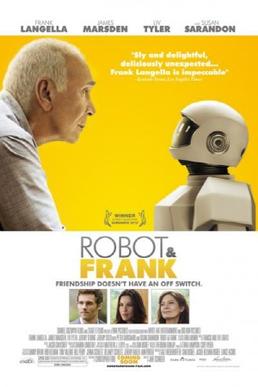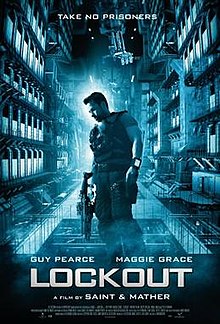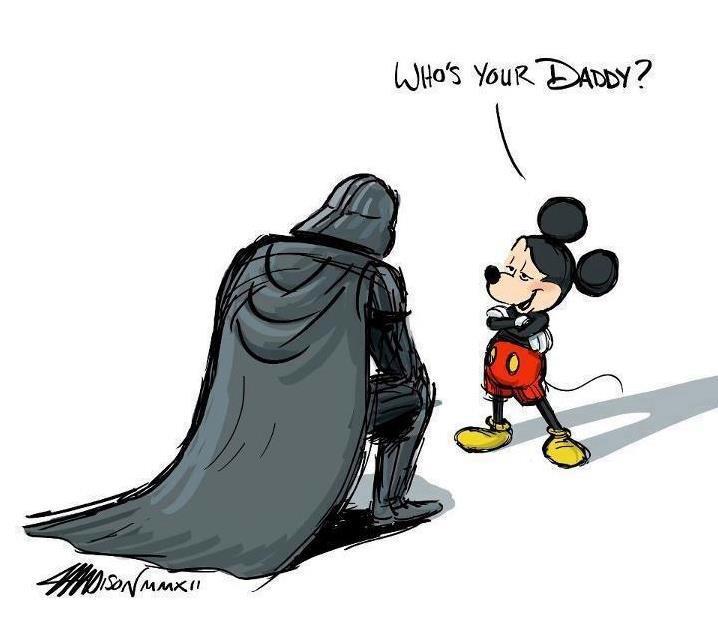MOVIE REVIEW: Iron Man 3 (2013)
http://www.sfsignal.com/archives/2013/05/movie-review-iron-man-3-2013/
Terry and I watched this ‘hot mess’ last night. I’d give it a 3.5 star rating. And I agree with Sfsignal’s observations (follow the link above).
Sunsets, Stars, West, Wind
MOVIE REVIEW: Iron Man 3 (2013)
http://www.sfsignal.com/archives/2013/05/movie-review-iron-man-3-2013/
Terry and I watched this ‘hot mess’ last night. I’d give it a 3.5 star rating. And I agree with Sfsignal’s observations (follow the link above).
First aired April 15, 2013 via the Syfy channel
Ninety minutes of my life I’ll never get back. I don’t need another police procedural to watch, even dressed up with some passable CG. Nor do I need overly complicated political intrigue among not just humans, but let’s throw in a few aliens and mutants. Give me some good old action adventure or military SF, and less of the contrived relationship drama.
I didn’t find out until after watching the pilot episode, and wandering why the heck the writers and director didn’t better convey the backstory, that an ebook was released last week to help viewers ‘catch up.’ The “Essential Guide” is available free in iTunes and Amazon, but not Barnes & Noble or other retailers (yet). Makes it somewhat difficult for me to acquire, since I’m boycotting both of the big A’s these days.
I may give this series a couple more episodes before pulling the plug. Syfy has a high bar to surpass, since they keep cancelling prematurely their original series (case in point: Stargate: Universe, Caprica and Alphas).
 Total Recall (2012)
Total Recall (2012)
3 out of 5 stars
I find myself drawn to movies inspired from PKD short stories. I was a bit disappointed when the Adjustment Bureau did not win the Nebula Award (Ray Bradbury Award for Outstanding Dramatic Presentation) in 2011. And I suppose it’s time I watched Minority Report and Bladerunner, but first I’m going to read the original stories as written by the incomparable Phillip K. Dick. In the case of Total Recall, the short story is entitled ‘We Can Remember It For Your Wholesale.’ Since I have not read the original short story, I will refrain from making comparisons and questioning the adaptation as portrayed in this latest re-imagining.
I will however compare this 2012 version to the other 1990 edition, which I’ve watched many times. Off the top of my head, I didn’t care for the excision of Mars from the plot. The Colony became Britain’s Penal Colony continent (Australia) and the world is toast, chemically speaking, except for the British Isles and Australia, connected by a super-fast (17 minutes one-way) tunnel through the Earth’s core called the Fall. I remain skeptical and would like to see a bit more science and less fiction explaining that setup.
I actually found it hard to watch this remake because I knew, before hand, some of the key plot points that would occur. No, they didn’t coincide completely with what I suspected, but enough doubt remained in my mind that I did not enjoy the film as much as I probably could or should have. For example, I really hoped that the ending would return us to Rekall and leave us wondering if it was ‘real’ or ‘Memorex’ but this adaptation preferred to alter reality and continue with less ambiguity. I think I would have preferred the more thought-provoking ending.
I guess the best thing I can say about this movie is I didn’t fall asleep while watching it. I know, that’s not saying much, but it happens to me quite frequently. But it didn’t knock my socks off as I expect when you’re adapting material from one of the 20th century’s most lauded science fiction authors.
 Robot & Frank (2012)
Robot & Frank (2012)
3 out of 5 stars
I saw a preview for this indie drama recently, either at the theatre or on another DVD, so I added it to my Netflix queue.
The story intrigued me by having an aging jewel thief, suffering from dementia, pass on the tricks of his trade to the domestic robot his son purchased as a home-health aide. High-tech parental neglect? Hard to say, since Frank refused to be shuffled off to the near-future nursing home (called a Brain Center). As expected, Frank also despised the robot foisted upon him by his son, going so far as to pit his daughter, the epitome of the idealist activist, against his son in a human v. robot philosophical battle. Meanwhile, Robot (Frank never deigns to name it) slowly grows on Frank.
You won’t find any evidence of Asimov’s Three Laws in Robot’s programming. His primary directive is to take care of Frank, helping him stay on a regular schedule, eat a healthy diet, get regular exercise and take up a hobby, like gardening, to stimulate his brain and fight off the ravages of the dementia. Frank scoffs at grubbing in the dirt, but eventually shows Robot how to pick a lock, using his old cat burglar lock pick set. Frank even questions Robot about his ethics, showing that Robot can lie and has no qualms about stealing. That was all the excuse Frank needed to plan their first job and return to his favorite past-time.
One (or two) of the funniest scenes involve children harassing Robot outside the library while Frank visits with the librarian and checks out more books. Franks runs off the kids and advises Robot that next time he should say ‘Self-destruct sequence initiated’ and start counting down from ten. Robot puts this to good use later, only using it against more gullible adults. I chuckled both times.
All of this plays out against the backdrop of his family: His son who is torn between visiting and caring for his father and spending time with his own family; his globe-trotting daughter traveling the third world in pursuit of her next research grant; and his forgotten ex-wife, played charmingly by Susan Sarandon, as the nearly superfluous local librarian. Frank Langella’s performance as, um, Frank, also shined. True to form, Robot did as programmed, no matter how much Frank or the audience hoped it might surpass or overcame said programming. Or did it? Check the garden, under the tomatoes.
 Double Indemnity (1944)
Double Indemnity (1944)
4 out of 5 stars
I rarely find time to watch all the movies I’ve recorded to my DVR from TCM. Saturday afternoon I started watching Double Indemnity with my daughter, who happened to be visiting. I didn’t get very far into the movie before we left to attend a wedding reception. I picked up where I left off Sunday morning and finished before lunch.
I especially wanted to view this noir classic in light of the KC Public Library‘s Winter Reading program, While the City Sleeps. I attended one of the ‘main events’ last month, a talk by local screenwriter Mitch Brian entitled ‘Noir: From Page to Screen.’ James M. Cain wrote the Double Indemnity story, but William Chandler adapted for the movie and both authors were highlighted by Mitch during his talk. Not having yet read the novel, I can’t confirm that ‘bad books make good movies,’ but this movie definitely kept my attention.
Aside from the cinematography, what I found most appealing about this movie of ‘bad people doing bad things’ was the performance of Edward G. Robinson as Keyes, one of the few good guys in this noir classic. He stole nearly every scene he was in. Outstanding and completely against his normal type-casting as a gangster. His performance even got me excited about a career as an insurance claims adjuster or actuary.
What intrigued me most, though, was constantly trying to puzzle out how this story could be redone in modern times, with the prevalence of security cameras, cell phones and the Internet. If it could be done, it would have to be some sort of hacker techno-thriller, as far as I could determine. Or in rural America, where none of those modern-day conveniences work reliably.

I sent an e-mail to my husband over lunch on Wednesday, asking if he wanted to accompany me to a lecture at the Central library branch that evening. I hadn’t heard back from him by the time I left work and when I walked into the house Wednesday evening, he did not appear to be attired appropriately for a trip back downtown. I grabbed us a very quick supper from the local Arby’s and then jumped back in the van for the thirty minute return trip to the Kansas City Public Library.
 While I got parked in the garage by 6:30, the walk into the library and up to Helzberg Hall on the fourth floor took a few minutes. The wine and cheese reception in the annex to the Hall had already been cleared away and one of the security personnel opened the door quietly for me to slip in during the introduction of Mitch Brian, already in progress. I slipped into an aisle seat near the back and took out my new Note II to take notes with its stylus. Reminiscent of my days with a Palm Pilot, only in color and at warp speed. For an inside peek into Mitch’s brain, take a look at his answers to the Pitch’s Questionnaire from Aug 2012.
While I got parked in the garage by 6:30, the walk into the library and up to Helzberg Hall on the fourth floor took a few minutes. The wine and cheese reception in the annex to the Hall had already been cleared away and one of the security personnel opened the door quietly for me to slip in during the introduction of Mitch Brian, already in progress. I slipped into an aisle seat near the back and took out my new Note II to take notes with its stylus. Reminiscent of my days with a Palm Pilot, only in color and at warp speed. For an inside peek into Mitch’s brain, take a look at his answers to the Pitch’s Questionnaire from Aug 2012.
Mitch began animatedly with the adage “Good books make bad movies.” He went on to explain that good movies are when someone wants something. Goals or quests work well, creating drama. Chandler and Hammett both write plenty of plot which translates into great movies. Film is pre-language. Hollywood wants everyone to have the same movie experience. Dialog sets up action and comments on it, but is not the action. Mitch challenged us to watch out for the Action/Reaction pattern.
 Adaptation. Dramatization dynamics of a scene. Reactions and argument. Details from the book. The literary work must submit to genre. Pay attention to point of view. Sometimes the camera is a character.
Adaptation. Dramatization dynamics of a scene. Reactions and argument. Details from the book. The literary work must submit to genre. Pay attention to point of view. Sometimes the camera is a character.
 Mitch read from the Maltese Falcon by Dashiell Hammett, from the end of chapter one and the beginning of two. Then he aired the same from the movie (starring Humphrey Bogart). Afterwards, he asked us what was missing? The audience correctly noted the rolling of the cigarette, the billboard scene, the pajamas, and calling a cab. What was added? The audience saw the shooting. Mitch noted the book is 100% observational. The first person point of view includes omissions. The movie uses the third person.
Mitch read from the Maltese Falcon by Dashiell Hammett, from the end of chapter one and the beginning of two. Then he aired the same from the movie (starring Humphrey Bogart). Afterwards, he asked us what was missing? The audience correctly noted the rolling of the cigarette, the billboard scene, the pajamas, and calling a cab. What was added? The audience saw the shooting. Mitch noted the book is 100% observational. The first person point of view includes omissions. The movie uses the third person.
 Mitch moved on to The Big Sleep by Raymond Chandler. He read the Phillip Marlowe introduction, then skipped to the end of chapter three, flowing on into chapter four. Again, the point of view was totally First Person. Mitch showed us the scene in the rare book shop he’d just read, again from the movie starring Bogart. Did Howard Hawks maintain that point of view? Not entirely, for the audience could see the woman signal the next customer, yet Bogart missed it (and we knew he missed it). From participant to observer. Postman Always Rings Twice by James Cain takes hardboiled to the next level.
Mitch moved on to The Big Sleep by Raymond Chandler. He read the Phillip Marlowe introduction, then skipped to the end of chapter three, flowing on into chapter four. Again, the point of view was totally First Person. Mitch showed us the scene in the rare book shop he’d just read, again from the movie starring Bogart. Did Howard Hawks maintain that point of view? Not entirely, for the audience could see the woman signal the next customer, yet Bogart missed it (and we knew he missed it). From participant to observer. Postman Always Rings Twice by James Cain takes hardboiled to the next level.
Mitch cut short his lecture, apparently feeling the need to stay within an hour time slot. He began the Q&A session at about half past seven. One of the questions from the audience front row caught my ear, as I recognized the voice from work. I made sure to wander up front after the lecture to great him and meet his wife.
I hung around to ask Mitch if he’d read Agatha Christie’s And Then There Were None (also known as Ten Little Indians), specifically because in one of the film adaptations (the one from the 60s that I watched recently on TCM). I wanted to know his thoughts on an author rewriting her own ending (Christie worked on that film and changed the ending completely from what she original wrote in 1939). While he had read the book, which is one of the best by Christie, I got the feeling he hadn’t seen the film, but thought it interesting the author decided to rewrite the ending to be less grim than her original work.
 When I first read the suggested readings for the Winter 2013 Adult Reading Program a few days ago, I could only find one or two that appealed to my tastes. After the lecture, which I really hadn’t originally planned on attending (you can thank the KC Public Library and their Android App for that bit of serendipity), I overhead one of the librarians remarking upon Mitch’s short story, recently published (ironically on my birthday last fall) in the anthology called Kansas City Noir. Now that I’ve heard him speak, met him and heard at least one rave review, I plan to reserve a copy at the library of the anthology next week and try noir again. Perhaps it will disprove the theory that bad books make good movies.
When I first read the suggested readings for the Winter 2013 Adult Reading Program a few days ago, I could only find one or two that appealed to my tastes. After the lecture, which I really hadn’t originally planned on attending (you can thank the KC Public Library and their Android App for that bit of serendipity), I overhead one of the librarians remarking upon Mitch’s short story, recently published (ironically on my birthday last fall) in the anthology called Kansas City Noir. Now that I’ve heard him speak, met him and heard at least one rave review, I plan to reserve a copy at the library of the anthology next week and try noir again. Perhaps it will disprove the theory that bad books make good movies.
 Lockout (2012)
Lockout (2012)
I regretted not adjusting my Netflix queue last week when I saw this sitting in my mailbox Friday afternoon. I can’t even remember why I added it in the first place. I suppose I was fishing for some non-existent intelligent and intriguing science fiction to watch. Instead, I reeled in Lockout.
The plot has been done before, and done better. The special effects were obvious CG and not completely well integrated with the filmed aspects of the movie. The military tactics employed during the climax made me roll my eyes, as they were obviously used to create a dangerous and completely unnecessary CG dog fight between fighters and a falling orbital prison.
I did, however, get several chuckles from the snarky dialog, most of it emanating from the side of Snow’s mouth (portrayed by Guy Pearce with a convincing American accent). The quotes page at IMDB for Lockout doesn’t really do them justice, as you really need to see and hear them in context to get the full impact of many of the punch lines.
I’d have to say, though, that Pearce is batting a thousand for appearing in scifi duds in 2012. First this one, then followed by the much hyped and disappointing Prometheus. At least his character in Lockout grows on your.
 The Hobbit: An Unexpected Journey (2012)
The Hobbit: An Unexpected Journey (2012)
4 out of 5 stars
I waited until the last possible moment to decide to watch The Hobbit ~ An Unexpected Journey this past weekend. If I plan to spend the money to watch a movie in a theater, I do it opening weekend, because then most of the money goes back to the studio, which in turns means more movies that I like being produced. In other words, I vote with my money. And, Terry and I prefer to watch movies from the VIP seating on the balcony of Theater 7 at the Legends. Well worth the climb up the stairs to the third floor Saturday afternoon. We arrived with eight minutes to spare and sat through an amazing number of previews, but not any advertisements, which was a change for the better.
My most recent reading of The Hobbit occurred three years ago, when it was chosen as the book of the month for November 2009 for the Fantasy Book Club at GoodReads. While I like The Hobbit, I’m not really the target audience for the book, since Tolkien wrote it for children. But as with most well written children’s tales, there is much to be gleaned and learned by the adult reader. I’m excited to re-read The Silmarillion next month for the same book club. In fact, I may read it as an ebook and also listen to it as an audiobook.
I loved the increased frame rate speed used to film The Hobbit. I’ve been screaming for smoother sharper filming for years. Really, there’s no excuse not to. My eyes can drink in more than just 24 frames per second so please flood me with clean, crisp imaging.
I felt the focus of the story shifted away from Bilbo almost too much, and became Thorin’s story with Bilbo relegated to comedic sidekick. My foggy memory of reading The Hobbit three years ago recalls an older Thorin, still prideful to the point of arrogance, but not this brooding barely middle-aged dwarf, a veteran of many hard-fought battles. I came away thinking Peter Jackson tried to turn Thorin into a darker, shorter Aragorn.
And the whole albino orc and warg subplot is just a bit much. I’m pretty sure that wasn’t conceived in Tolkien’s mind.
Overall, I’m satisfied with the first installment of the drawn-out film trilogy adaptation of Tolkien’s The Hobbit. If you haven’t seen it yet, I’d encourage you to catch it on a big screen near you soon.
Thirty-five years ago I got sucked into Lucas’ Star Wars like most everyone else in the world. I can’t tell you how many times I’ve watched that movie since then. More than once in a movie theatre, and many, many times since via my own home theatre. Every word of dialog is memorized. Every scene emblazoned on my mind’s eye. Every soaring sound of the score composed by John Williams ringing in my ears. It was the right movie magic at the perfect time.
 So I scratched my head earlier this week when my phone kept crawling across my desk or buzzing in my pocket because of the swarm of tweets bombarding cyberspace about Disney buying Lucasfilm. I didn’t get a chance to really delve into that development until days later, thanks to endless meetings at work. I did glimpse some pretty funny images cropping up in my newsfeeds.
So I scratched my head earlier this week when my phone kept crawling across my desk or buzzing in my pocket because of the swarm of tweets bombarding cyberspace about Disney buying Lucasfilm. I didn’t get a chance to really delve into that development until days later, thanks to endless meetings at work. I did glimpse some pretty funny images cropping up in my newsfeeds.
Here are a few of the ones that caught my eye:





And my thoughts on the billions Disney gave George for the Star Wars franchise? At least there will be a seventh movie. I’ll keep hoping it will better than the last three. George doesn’t need to worry about his retirement now (not that he ever had to worry much).
Meanwhile, I’m still missing those droids I was looking for . . .

 Machine Gun Preacher (2011)
Machine Gun Preacher (2011)
2.5 out of 5 stars
Disturbing to watch, and not just because of the language and violence. I cannot endorse ‘the ends justify the means’ as proclaimed by the real Childers during the end credits.
Gerard Butler definitely hit the nail on the head with his portrayal of Sam Childers. Michelle Monaghan also performed well as his wife, Lynn, and provided at least one beacon of Christian grace.
I recommend perusing this review from ChristianAnswers.net which resonates with my feelings and conclusions after ‘sleeping’ (restlessly) on the viewing of Machine Gun Preacher. The only bit I disagreed with involved the amount of sexuality protrayed in the film. First, the sex was between Sam and his wife. Second, nothing explicit is shown on screen. After scanning through the positive comments, I found a reference to an excellent essay (an excerpt from On Combat by by Lt. Col. Dave Grossman) called On Sheep, Wolves and Sheepdogs which I do highly recommend.